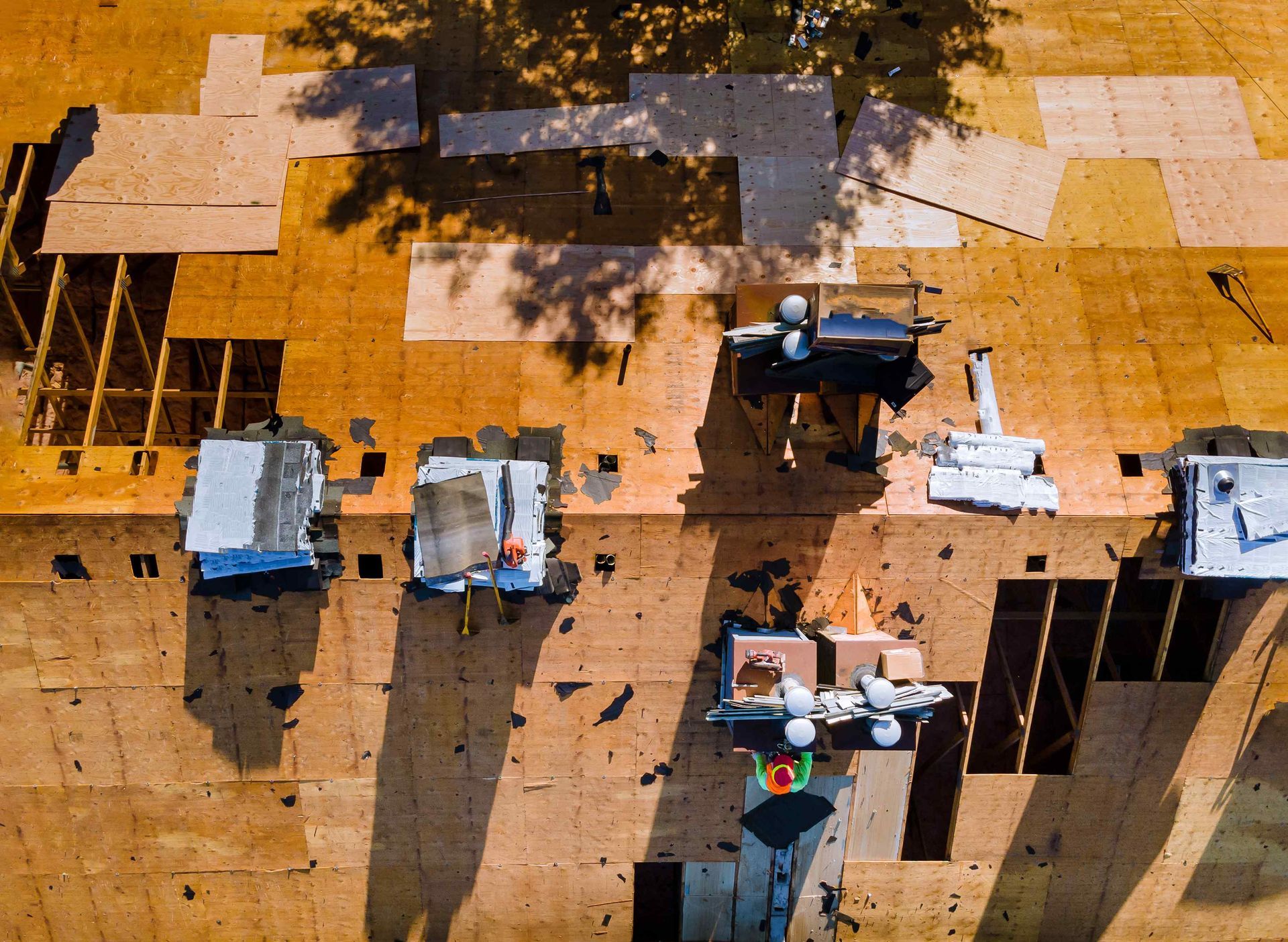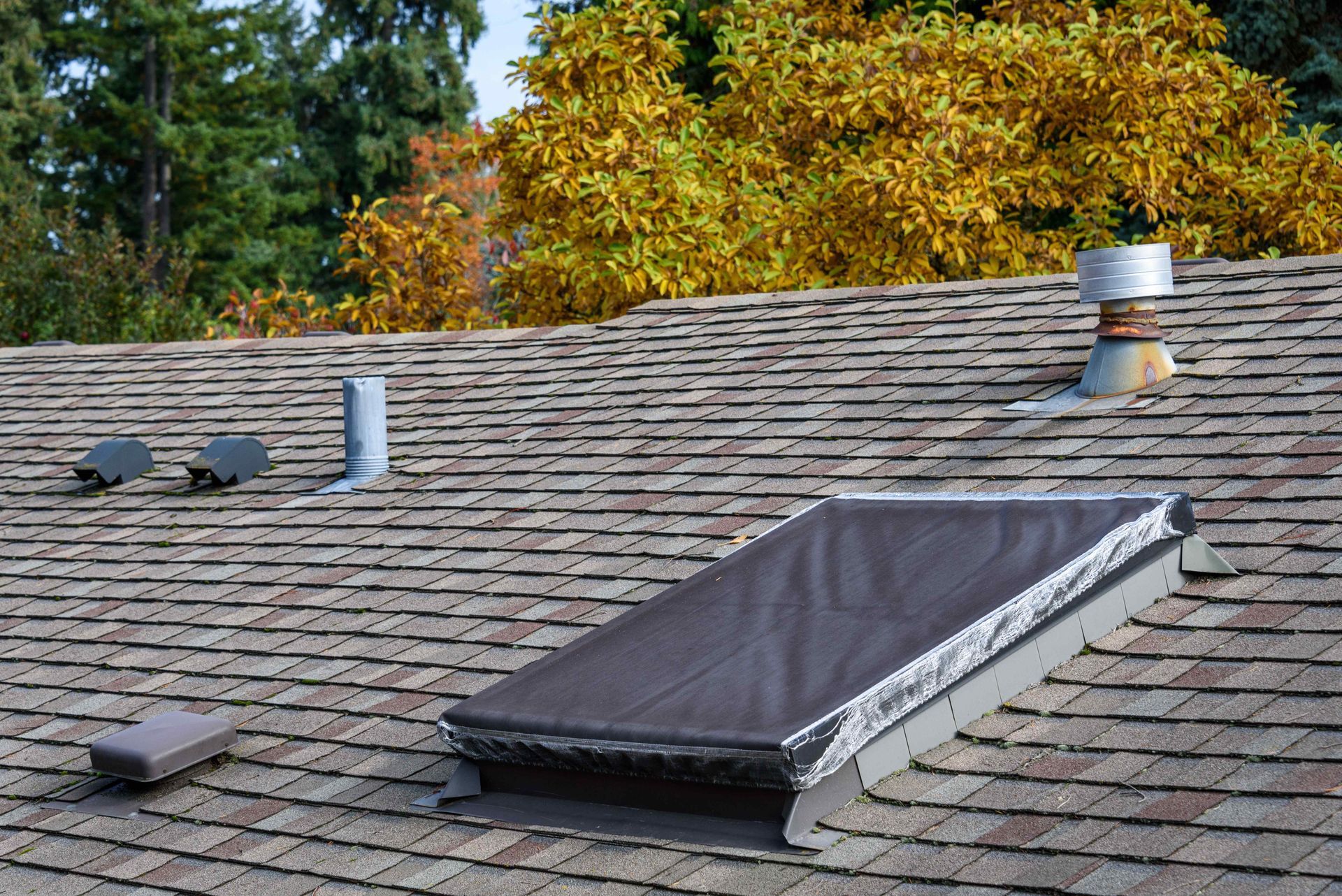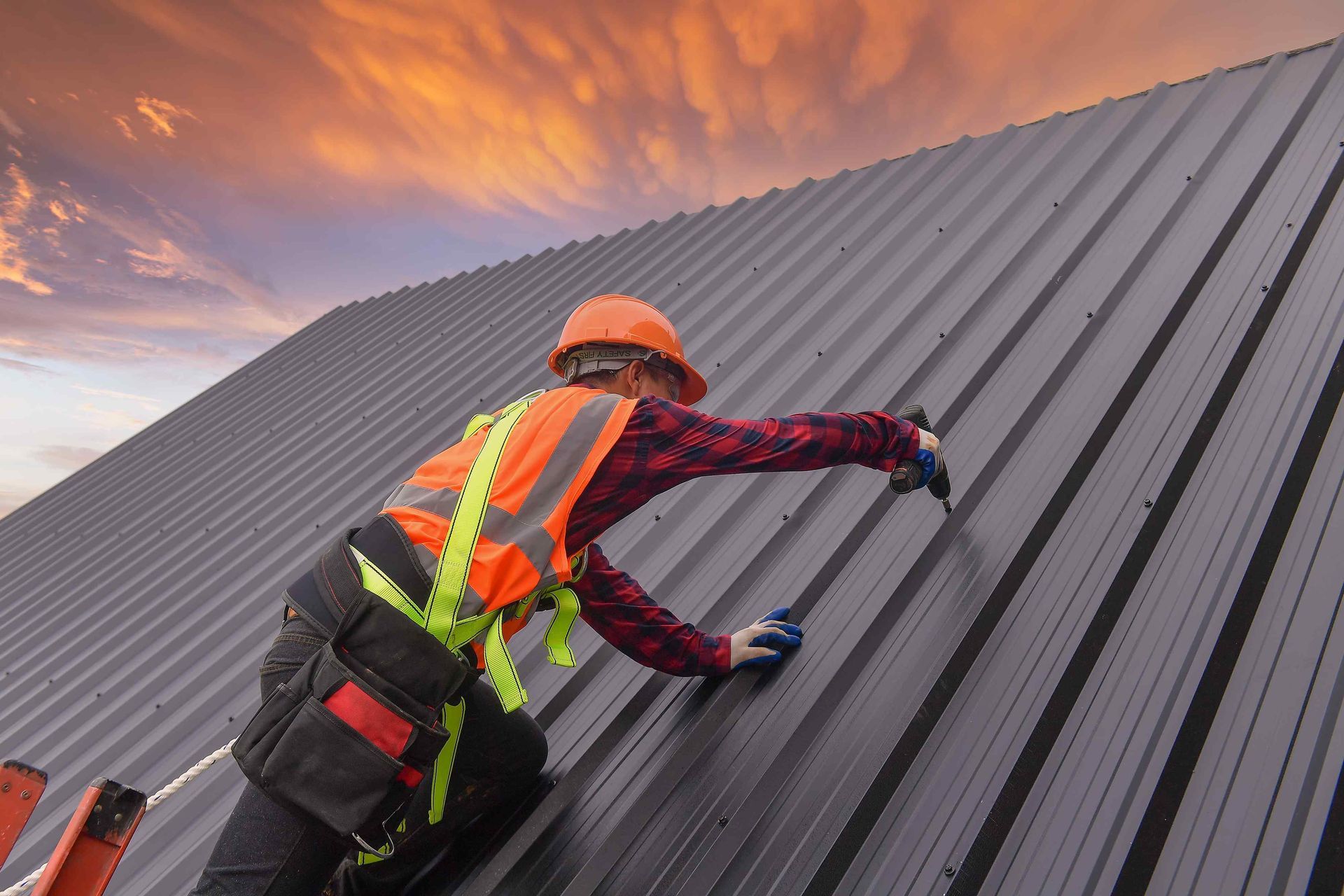Roof Replacement with Solar Panels
Roof Replacement with Solar Panels
In today's environmentally-conscious world, the concept of combining roof replacement with solar panels has gained significant traction. Not only does this innovative approach contribute to sustainability efforts, but it also offers homeowners various benefits that make it a worthwhile investment. This blog post will guide you through the entire process of integrating solar panels into your roof replacement project, from evaluating your current roof condition to selecting the right solar panels and navigating the installation process. By the end of this comprehensive guide, you'll have a clear understanding of how to enhance your home's energy efficiency and curb appeal while reducing your carbon footprint with a seamless roof replacement integrated with solar panels. Let's dive in and explore the exciting world of solar-powered roofing solutions!
Introduction
Integrating solar panels into your roof replacement project is a forward-thinking decision that offers numerous benefits. This comprehensive guide will walk you through everything you need to know about replacing your roof with solar panels. From the initial assessment to installation and financing options, we'll cover it all to help you make an informed decision for a sustainable and energy-efficient roofing solution.
Benefits of Solar Panels
Solar panels offer numerous benefits beyond just energy savings. By upgrading your roof with solar panels, you can significantly reduce your carbon footprint and contribute to a more sustainable environment. Additionally, solar panels can increase the value of your home and make it more attractive to potential buyers in the future. The long-term cost savings from reduced energy bills coupled with potential tax incentives and rebates make solar panels a wise investment for homeowners looking to save money and make a positive impact on the planet. It's a win-win situation that combines environmental benefits with financial rewards.
Assessing Roof for Solar Panel Installation
Assessing your roof for solar panel installation is a crucial step in the process of upgrading to solar energy. Before diving into the installation phase, it's essential to evaluate whether your roof is suitable for solar panels. Factors such as the age and condition of your roof, its structural integrity, orientation to sunlight, and shading impact the feasibility of installing solar panels.Begin by inspecting the age and condition of your roof. Solar panels are a long-term investment, and it's important to ensure that your roofing system can support them for the duration of their lifespan, which is typically 25 years or more. If your roof is nearing the end of its service life, it may be more cost-effective to replace the roof before installing solar panels to avoid any potential issues down the line.Structural integrity is another critical consideration. Solar panels add weight to your roof, so it must be sturdy enough to support the additional load. A professional roofing contractor can assess the structural strength of your roof and determine if any reinforcements are needed to accommodate solar panel installation safely.The orientation of your roof plays a significant role in maximizing solar energy production. Ideally, your roof should face south in the Northern Hemisphere or north in the Southern Hemisphere to receive the most sunlight throughout the day. However, east- and west-facing roofs can also be suitable for solar panels, depending on the specific circumstances.Shading can significantly impact the efficiency of your solar panels. Trees, buildings, or other obstructions that cast shadows on your roof can reduce the amount of sunlight your solar panels receive, affecting their energy output. Conduct a shading analysis to identify any potential shading issues and consider trimming or removing trees or adjusting panel placement to optimize solar energy production.By thoroughly assessing these factors and consulting with solar energy experts, you can ensure that your roof is ready for solar panel installation, setting the stage for a successful transition to clean and sustainable energy for your home.
Choosing the Right Solar Panels
When choosing the right solar panels for your roof replacement, several factors come into play. Consider the efficiency, durability, and aesthetics of the panels. Look for high-quality solar panels that align with your energy needs and budget. Additionally, research different types of solar panels, such as monocrystalline and polycrystalline, to determine the best fit for your roof and desired energy output. Don't forget to explore warranties and certifications to ensure you're investing in reliable and long-lasting solar panels that will benefit your home for years to come.
Roof Preparation for Solar Panel Installation
When preparing your roof for solar panel installation, there are several key steps to ensure a successful and efficient process. One essential aspect of roof preparation is to have a thorough inspection of your roof to assess its structural integrity and suitability for solar panels. This inspection will help identify any potential issues that need to be addressed before installation begins.Another critical part of roof preparation is to ensure that your roof is in good condition and free of any existing damage or leaks. It's important to repair any existing issues before installing solar panels to prevent any complications or damage in the future. Additionally, proper roof maintenance, such as cleaning and clearing debris from the roof, will help ensure a smooth installation process and optimal performance of your solar panels.Furthermore, you may need to make adjustments to your roof to accommodate the installation of solar panels, such as reinforcing the roof structure or installing additional support for the panels. Consulting with a professional roofing contractor or solar panel installer can provide valuable guidance on the specific requirements for your roof and make sure that the installation process goes smoothly.By taking the time to properly prepare your roof for solar panel installation, you can help maximize the efficiency and longevity of your solar energy system. Investing in adequate roof preparation will ensure that your solar panels are installed correctly and can provide you with clean, renewable energy for years to come.
Installation Process of Solar Panels
The installation process of solar panels is a crucial step in upgrading your roof. It involves several key stages that ensure the panels are properly and securely placed for optimal performance. Before the installation begins, a detailed assessment of your roof's condition and structure is conducted to determine the best placement for the solar panels. The installation team will then prepare the roof by making any necessary repairs or upgrades to ensure it can support the weight of the panels. The next step involves mounting the racking system, which provides the support and stability for the panels. Once the racking system is securely in place, the solar panels are carefully installed on the roof. Wiring and electrical connections are then completed to integrate the solar panels with your home's electrical system. Finally, the installation team will perform thorough testing to ensure everything is functioning correctly and efficiently. By following a systematic installation process, you can be confident that your solar panels will be installed correctly and ready to harness the power of the sun for years to come.
Maintenance and Care of Solar Panels
Maintaining and caring for your solar panels is essential to ensure optimal performance and longevity. Regular inspections to check for debris buildup, shading issues, or any potential damage are key. Cleaning your solar panels periodically, especially in dusty or high-pollen areas, will help maximize their efficiency. Monitoring your energy production through a monitoring system can alert you to any issues promptly. Additionally, scheduling professional maintenance at least once a year can address any larger concerns and keep your solar panel system running smoothly for years to come. Remember, proper care and maintenance will help you get the most out of your investment in solar energy.
Financing Options for Solar Panel Roof Replacement
When it comes to replacing your roof with solar panels, understanding the financing options available is key to making this sustainable investment a reality. Transitioning to solar energy offers long-term financial benefits, but the initial cost of solar panel installation can be a significant consideration for many homeowners. Fortunately, several financing options are designed to make solar panel roof replacement accessible and affordable for a wide range of budgets.One popular financing option is solar loans, which are specifically tailored for homeowners looking to install solar panels. These loans typically have flexible terms and competitive interest rates, allowing you to spread the upfront cost of solar panel installation over a period that works for your financial situation. Solar loans offer the advantage of enabling you to own the solar energy system outright, allowing you to benefit from energy savings and potential incentives in the long run.Another financing option is solar leases or power purchase agreements (PPAs), where a third-party solar provider owns and maintains the solar panels on your roof. In a solar lease, you pay a fixed monthly amount for the use of the solar panels and the electricity they produce. With a PPA, you purchase the energy produced by the solar panels at a predetermined rate. While leases and PPAs may not provide the same level of ownership benefits as solar loans, they can be an attractive option for homeowners who prefer a lower upfront investment and predictable energy costs.Government incentives and rebates can also make solar panel roof replacement more affordable. Depending on where you live, you may be eligible for federal, state, or local incentives that offer financial support for installing solar panels. These incentives can include tax credits, rebates, and other programs designed to offset the cost of solar energy systems, making them more accessible to a broader audience.Additionally, some utility companies offer incentives for installing solar panels, such as net metering programs that allow you to receive credits for excess electricity produced by your solar system. These credits can help offset your electricity bills and improve the overall return on investment for your solar panel installation.By exploring these financing options and taking advantage of available incentives, you can make replacing your roof with solar panels a financially viable and environmentally sustainable decision for your home.
Conclusion
In conclusion, replacing your roof with solar panels is a smart investment that offers a wide range of benefits. Not only can solar panels help you save on energy costs and reduce your carbon footprint, but they can also increase the value of your home. By carefully assessing your roof, choosing the right solar panels, properly preparing and installing them, and ensuring regular maintenance, you can enjoy clean energy for years to come. Additionally, exploring the various financing options available can make the transition to solar power even more affordable. Embracing solar energy is not just a decision for today but a sustainable choice for the future. Make the switch to solar panels and experience the long-term rewards of a greener and more cost-effective home environment.

Aux Element 1

Aux Element 2

Aux Element 3
Quick & Reliable roof repair and installation Savannah Georgia
Ready to secure your property with top-tier roofing? Contact us today for reliable solutions that stand the test of time—your trusted Savannah roofing partner – Top Roof.
Navigation
Working hours
- Mon - Fri
- -
- Saturday
- -
- Sunday
- Closed

All Rights Reserved | Top Roof
Powered by: WebPro.ai

